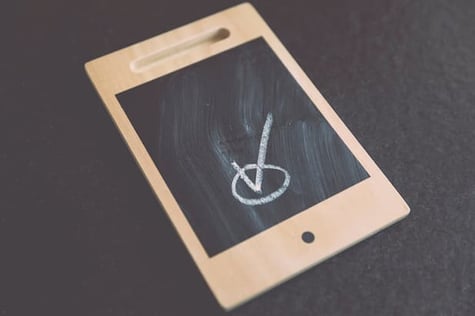Smart devices are absolutely everywhere. A quick look through the latest projects on Kickstarter or a Sunday night viewing of Dragons’ Den will show you the way technology is going: it’s becoming wearable, it’s already handheld and it’s always connected.
It’s an exciting time to work in product engineering; new wireless technologies with existing software platforms that help advance rival devices, rather than diminishing them. Technology is becoming more integrated and is seamlessly connected - meaning there are increasing sized markets for wearable and handheld devices of all kinds.
But it’s also more challenging to integrate an antenna into these products. Not only do devices need the right type of antenna, but the fact that these products stay on our person makes it even harder to optimally locate an antenna.
Users aren't antenna friendly
When a wireless antenna is within close contact with the human body it causes two performance issues, adding an extra layer of difficulty to the job of product engineers when selecting and positioning antenna.
1. Power Loss external to the product, affecting both transmission and reception
2. De-tuning of the antenna
The human body acts like a dielectric material, which has an effect on the electric field portion of the antenna’s near-field operation. These effects are difficult to quantify due to body movement, but you may be able to get a clear idea through the use of phantom body part testing in anechoic chambers.
The impedance mismatch causes a reduction in radiated power. Almost all wearable products rely on battery power, so this mismatch will drain the battery quicker as the transmitter increases power to compensate. This also raises issues of Specific Absorption Rate with the increased amount of power!
Body-worn devices
Wearable devices are designed to be worn in a specific place on the body; be that a wrist for a smartwatch or on the head for augmented reality headsets. Positioning antenna within wearable products requires testing and these tests can provide a clearer placement solution for an antenna.
The Antenna can then be matched to compensate for these body de-tuning effects, using their actual application rather than tuning it for when the device is in open space.
Handheld devices
Handheld products can be used in more than one way, so finding an optimum location can be much more tricky than in a wearable device. Tablets, smartphones and point-of-sale payment terminals can all be held and used in different ways.
User testing and experimentation may help you locate your antenna optimally. The classic mistake of getting this wrong was with Apple’s iPhone 4, where the antenna was located specifically where left-handed people held the device during phone calls - Apple’s defence was that customers were using the product “the wrong way” and advised customers to purchase a case. Not an ideal scenario to find yourself in, especially if you don’t have the cult support that Apple have!
Position the antenna in handheld devices where you know hands won’t get in the way during regular use, so you can focus on matching the antenna.
Conclusion
Typically, PIFA antenna - where the ground runs underneath the antenna - are better suited to handheld and wearable devices than their IFA and Monopole-type counterparts. This is largely because of the radiation patterns, PIFA antenna radiate outwards of the body, increasing efficiency and potentially the battery life of your product.
Integrating an antenna is a challenge in itself, but integrating them into handhelds and wearables adds another layer of difficulty and challenge. Getting the right advice at the early stages of your layout is the best way to avoid a disaster.
We can give you free advice based on your product and help you get the right layout before it’s too late. We also have anechoic chambers available for you to test your products, and we have phantom heads and hands to test your wearable products as your customers will be using the products.




